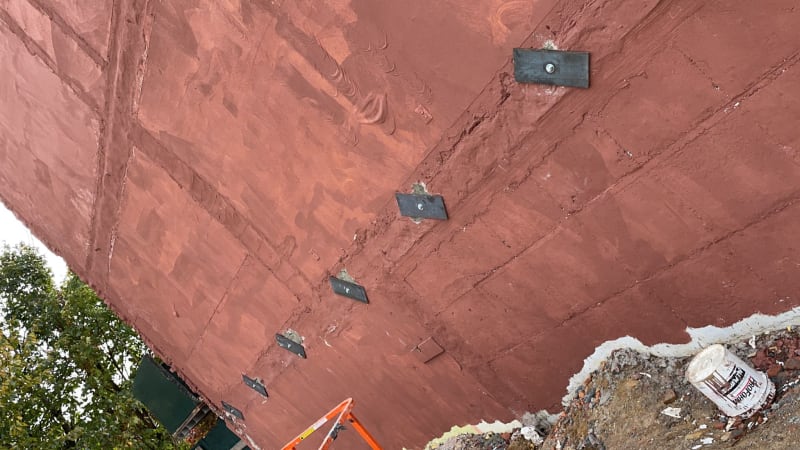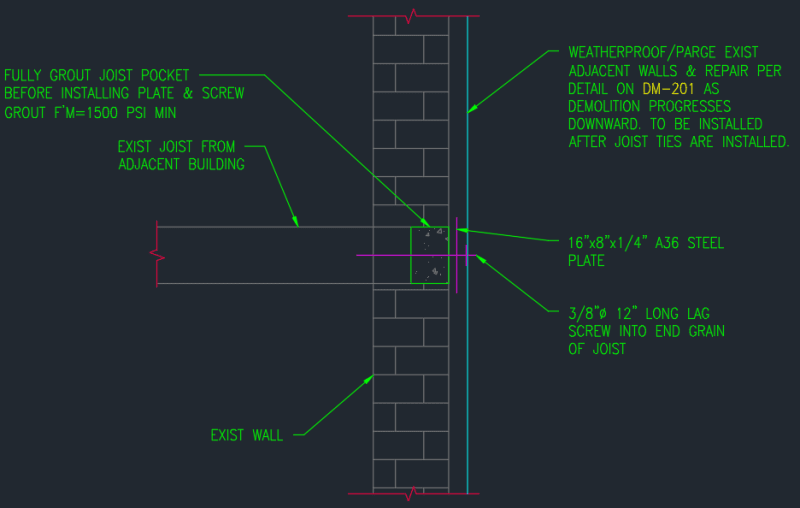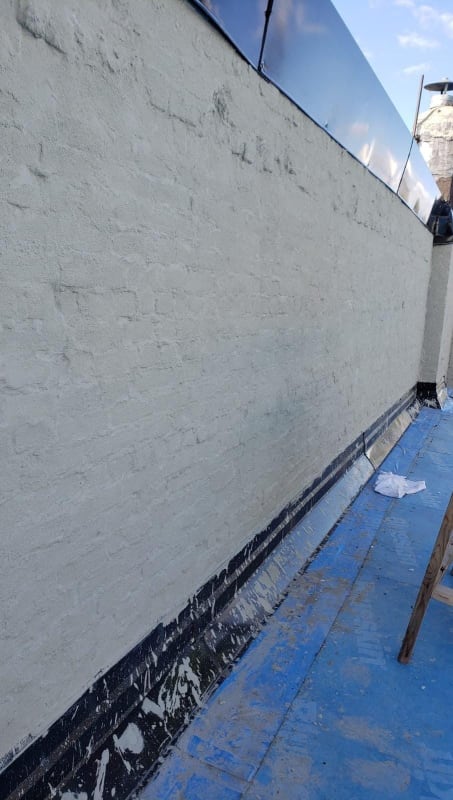Looks like you're doing dm drawings in nyc. Steal a few dm drawings by others and you'll see what's typical. There are only a few details that get copied over and over for this, near zero engineering typically.
The adjacent building joist will be held back at least 1 wythe, so you're removing some brick no matter what. That end will also be fire cut, so you'll be hitting the joist end at an angle (not worrying about capacity with that statement, just constructability of your detail). Going to the side of the joist is not atypical in these situations but you are correct that it requires opening more of the wall. 50% of the time your client gets permission to enter the adjacent property and do it from inside (and pay for repairs). When that can't be done you can open a larger cavity. If you don't want to or can't do that then going into the end grain is also done. I have seen it done with "sammy" type connections, where it's got a lag with a threaded coupler on the end. It gets screwed in, you thread a rod on, you brick up around that rod, and then put your plate and nut on. Nobody checks these for loads in the condition you're looking at, I usually see something around "5'-0" o.c. max" and if you're smart you locate their stairs (assuming that they are on the wall you're working on) and know that there's a trimmer on each end and nothing between. If the wall seems particularly distressed you may want to consider more frequent anchors or using continous channels between anchors.





